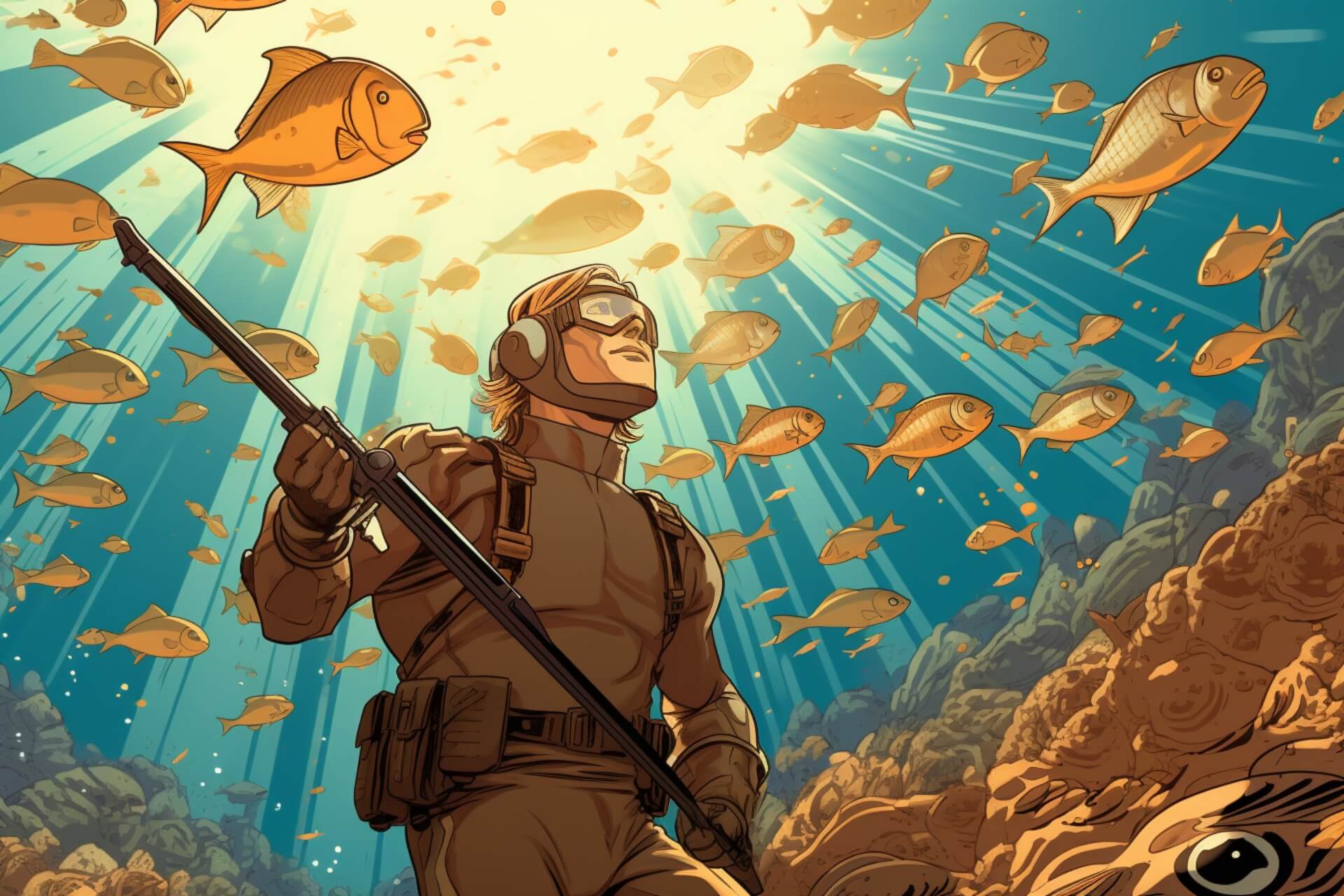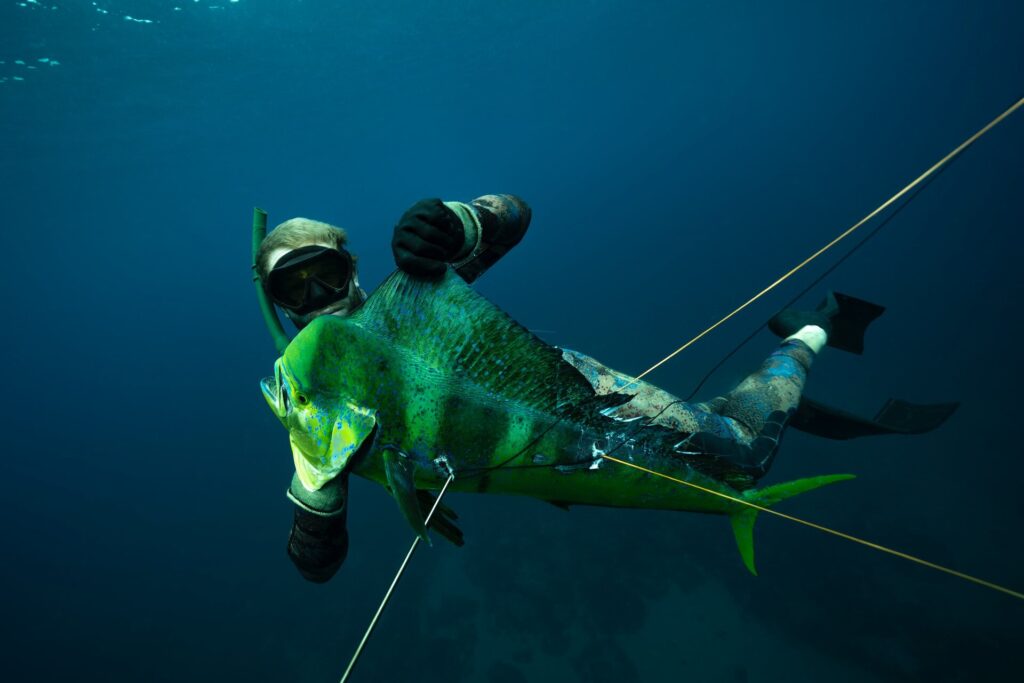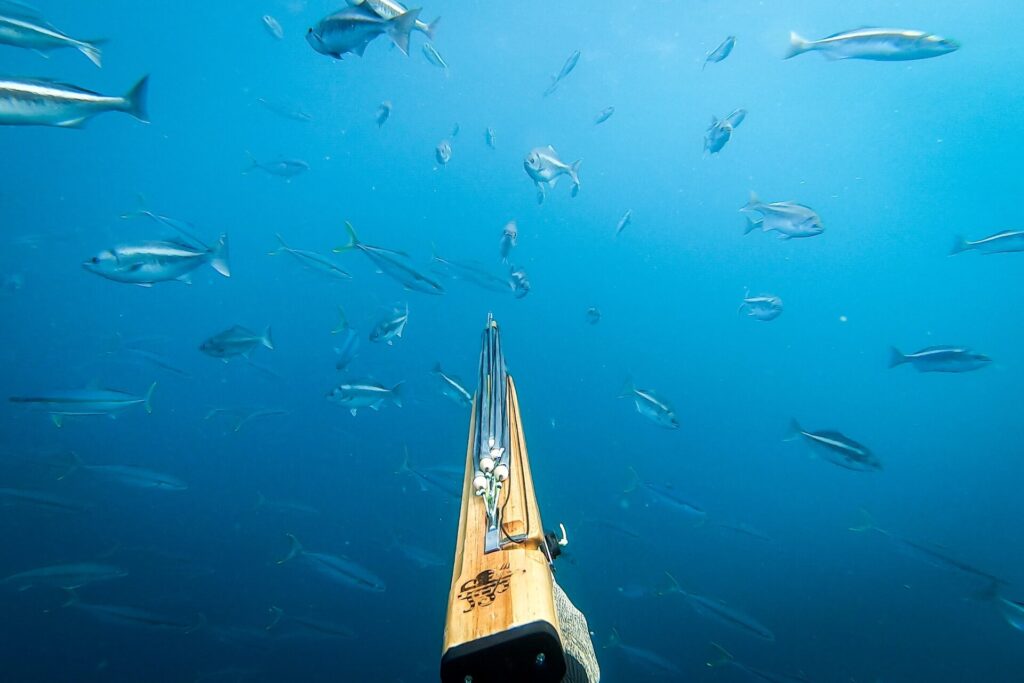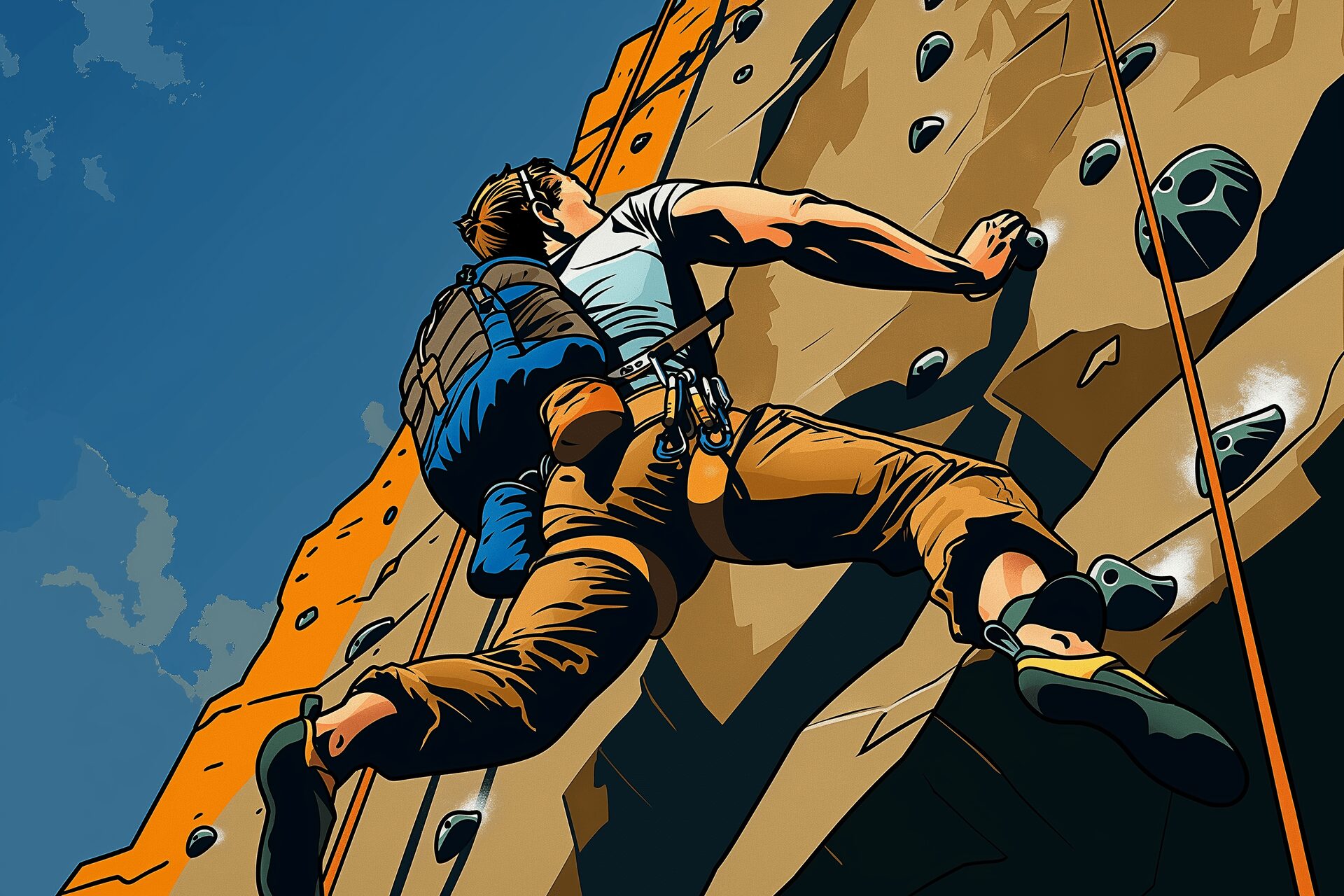
As an Amazon Associate, Modded gets commissions for purchases made through links in this post.
Spear fishing is a fun hobby, especially if you’re into outdoor activities and diving. The allure of the water is always tempting and the thrill of the hunt — even underwater — is hard to pass up. If you want to try spear fishing and wondering what you need to embrace the lifestyle, you’re in the right place.
Here’s a list of essential spear fishing gear you shouldn’t leave home without.
1. Speargun
A good quality speargun will be your best friend when fishing. It will help you get accurate shots to hit your target in water. Ideally, your speargun should match your diving environment. Open water diving can require you to dive deeper so it’s best to use a larger speargun — around 140 cm or longer — with multiple rubbers for greater effectiveness. Larger guns have more substantial power due to their size and band resistance.
Sticking to medium-sized guns around 100 to 120 cm is advisable for diving in shallow water or reef spear fishing. For cave spear fishing, you’d want a shorter gun, around 65 to 70 cm, to minimize ricochets and damage to your spear when it hits rocks.
To give you a better understanding of how a speargun works, here’s an overview of its parts:
- Barrel: The body of your gun to which the bands are attached. The barrel is also where your spear rests when it’s loaded.
- Trigger: The mechanism that releases the loaded spear upon firing.
- Line: A length of monofilament material connected to your spear and gun. It’s used to retrieve your catch or spear.
- Band: The band gives power to your gun and shaft. Attachment points on the barrel ensure your rubber band stays in place when loading the gun.
- Spear: Also called the shaft, the spear is the projectile you use to target fish. A barb, or a flopper, prevents the fish from slipping out of the spear when caught.
Your speargun works by storing energy in the rubber bands. When you pull the trigger, the bands propel the spear into your target. Your speargun’s power is dictated by the resistance of your bands and the length of your barrel.

2. Wetsuit
Staying in the water is essential in spear fishing. You want to stay long enough in the water to get a good shot at your target before returning to the surface. A wetsuit will help you do that by keeping you warm, especially in deeper dives. Your wetsuit will also protect you from minor bumps and scratches on your dives.
There are different types of wetsuits available in the market. Here’s a brief rundown:
- Open Cell Wetsuits: These suits use a neoprene lining to fit tighter against the skin. This helps keep the water out and insulate you better in colder waters. Open cell wetsuits are typically more comfortable but can be a little expensive.
- Closed Cell Wetsuits: They are popular among spear fishers because they are more affordable and can be used for other water activities. These suits have multiple layers of lining and let in a little bit of water inside to help warm your body during dives.
Like spearguns, your wetsuit should also fit the environment you’re in. Tropical wetsuits can be as thin as 1 mm and are used in warmer waters. Choose thicker wetsuits, around 3 to 5.5 mm, when diving in cold water to keep you warm. Go for 7 mm wetsuits if you want to dive in colder weather.
Wetsuits also help you gain additional buoyancy during dives. This is especially helpful when returning to the surface, as the extra buoyancy helps conserve energy when resurfacing. Some wetsuits also have a camouflage design to help you break your outline when diving and disguise yourself better as you hunt.
3. Float Line and Flag
Your float line is your first defense against diving accidents. It signals boats that there’s a diver in the surrounding waters and lets them know to take care when passing by. Your float line should ideally be brightly colored and have a flag attached to make it more visible.
New and veteran spear fishers must always use a float when diving. Aside from being a safety device, your float can serve as a tether for your line and speargun. You can also hook up your catch to your float to prevent unwanted attention from predators in the waters.
4. Fins
Ask advice from any diver or spear fisher, and you’ll probably hear the same thing: get a good pair of diving fins. Fins are a lifesaver when diving. They give you more power with every kick, propelling you farther in the water while conserving energy.
Fins come in different sizes and configurations. Like with the mask, choose a fin that fits you just right. The last thing you want to experience in the water is cramps or a lost fin. Tight fins will make you cramp as you kick, while loose ones will slip off easily. Try going with soft fins to make it easier on your ankles when you dive.

5. Dive Mask
Spear fishing differs from conventional fishing since you must get up close and personal with your target. To do this, you need maximum visibility while diving. A proper dive mask will help you do just that. A dive mask is essential in spear fishing. It must fit well, give you good visibility underwater and be fog-free on extended dives. Your dive mask also serves as face protection during dives.
The first thing you must do when picking a dive mask is to ensure it fits you just right. Press the mask to your face and inhale slightly to see how it fits. You’re good to go if the mask sticks to your face when you lean forward.
One quick tip before you go diving with your mask: be sure to clean it before heading to the water. New masks contain residue from manufacturing that fogs up the lenses when you dive. To remove the residue, clean both sides of the lenses with toothpaste multiple times.
6. Snorkel
A snorkel will help you spearfish in shallow waters easily by allowing you to breathe with your face submerged in water. Some snorkels have purge valves and splash guards, which are great add-ons but entirely optional. If you like to keep things simple, go for a basic J-shaped snorkel. It will do the job when you’re reef spear fishing.
7. Knife
Your spear fishing gear is incomplete without a trusty knife. It’s one of those must-haves when diving since you never know when you need to cut something while underwater. Diving knives are excellent utility and safety tools — you can cut entangled lines and nets underwater and dispatch fish as quickly and humanely as possible.
Pick a lightweight, highly visible, rust-resistant knife with a good pointed tip. The tip will allow you to punch into the fish’s brain quickly and efficiently. You can also use your knife to field dress and clean the fish properly for cooking and storage. Some divers prefer carrying a knife with a serrated side for cutting rope.
8. Weight Belt
Buoyancy can be your friend and foe while in the water. It’s essential to strike a good balance between your weights and buoyancy when diving as they allow you to resurface quicker and go on deep dives with little resistance.
The wetsuit you use to keep warm is also designed to float you to the surface. Using a weight belt can help you counteract your buoyancy so you can dive deeper. Experiment with different weights to determine the right configuration for your body type. Add small increments to your weights as you familiarize yourself with your setup to avoid sinking on dives.

9. Socks and Gloves
Depending on your wetsuit alone to keep you warm will not be enough. You also need a pair of socks and gloves to keep your feet and hands warm while diving. The water becomes colder as you dive deeper, so use socks and gloves suitable for your dives. Your hands will tense up in cold waters, so keeping them warm and functional is ideal for accurate shots.
Gloves are exceptionally important since they protect your hands from jagged rocks and fish. It’s easy to cut yourself while handling fish or maneuvering around rocks and other materials while diving. Again, fit is the most crucial factor when choosing socks and gloves. A good fit will ensure proper retention and mobility when spear fishing.
10. Dive Bag
Lastly, you need a bag to carry your spear fishing gear in. Keep all your gear in one place, so you know exactly where each item is. It’s an excellent way to prevent your equipment from prematurely wearing out.
Some divers opt for a hard case, while others prefer a dry bag. Hard cases are suitable for storage and transportation. This is especially true if you must go on planes for diving trips abroad but they can be more expensive and bulky to lug around.
On the other hand, dive bags are better for quick-and-go storage and carrying but offer less protection than hard cases. Most dry bags can also be carried easily like a backpack, making them perfect for diving trips where you must go on treks or hikes to reach your destination.
Spear Fishing: An Outdoorsman’s Exhilarating Underwater Hobby
Loving the outdoors is all a matter of perspective. You just have to find the right hobby to focus on. Some outdoorsmen love to hunt or fish, spear fishers love to do both at the same time. And like with any other hobby, it’s best to get the right equipment for the job.
Invest in your spear fishing gear, embrace the lifestyle and build your skills. Sooner or later, you’ll find yourself at home in any water with a string of caught fish in your line.
Stay up to date with the latest by subscribing to Modded Minute.
Author
Jack Shaw is a senior writer at Modded. Jack is an avid enthusiast for keeping up with personal health and enjoying nature. He has over five years of experience writing in the men's lifestyle niche, and has written extensively on topics of fitness, exploring the outdoors and men's interests. His writings have been featured in SportsEd TV, Love Inc., and Offroad Xtreme among many more publications.






